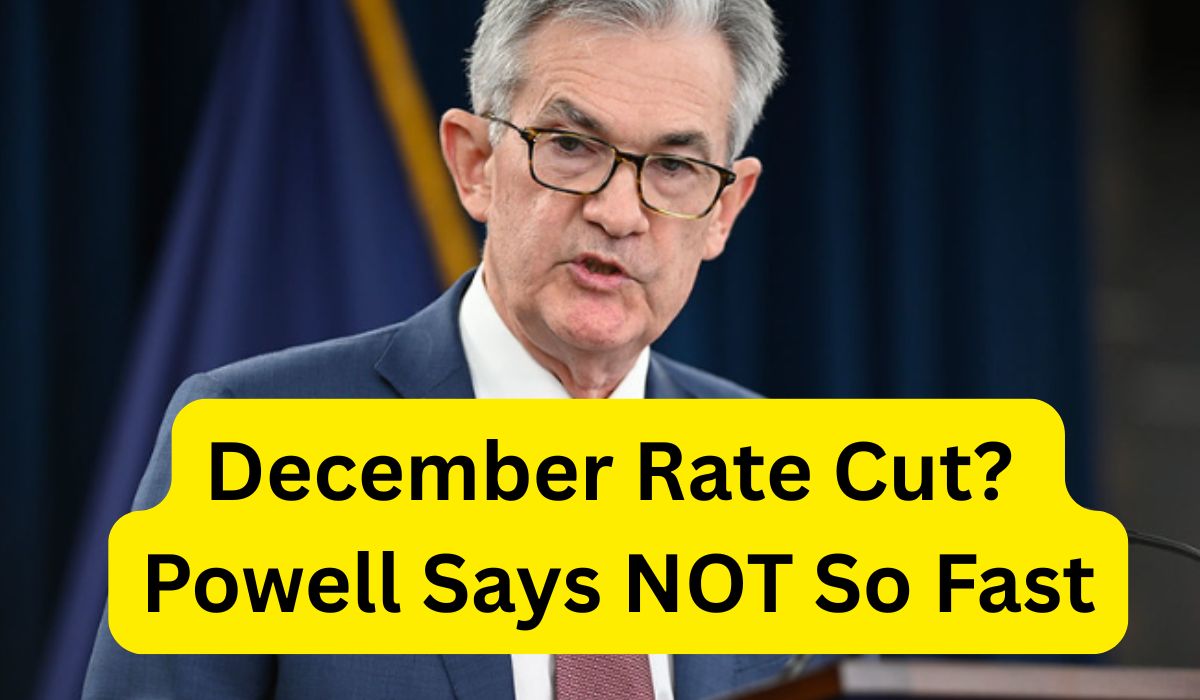Federal Reserve Chair Jerome Powell announced a quarter-point interest rate cut in recent remarks, marking the second consecutive reduction that brings rates to their lowest level in three years. But what caught my attention most wasn’t the cut itself—it was Powell’s pointed warning that another reduction in December is “not a foregone conclusion. Far from it.”
This represents a significant shift in Fed messaging. After months of relatively predictable policy moves, Powell is signaling genuine uncertainty about the path forward.
The Rate Decision and What’s Driving It
The Federal Open Market Committee lowered the federal funds rate by 25 basis points to a range of 3.75% to 4%. Powell explained in his official statement that this decision reflects the committee’s assessment of a changing risk landscape.
What’s particularly noteworthy here is the Fed’s acknowledgment that “downside risks to employment appear to have risen in recent months.” The labor market data Powell referenced paints a picture of gradual cooling—job gains have slowed significantly, hiring remains subdued, and both worker perceptions of job availability and employer hiring difficulty continue declining.
Powell described the current environment as “a less dynamic and somewhat softer labor market,” which marks a notable change in tone from earlier Fed communications this year.
The Inflation Complication
Here’s where things get complex. While the Fed is cutting rates partially due to employment concerns, inflation remains “somewhat elevated” at 2.8% for both total and core PCE measures through September. This is higher than earlier in the year, driven primarily by goods inflation picking up even as services inflation continues to cool.
The critical factor complicating the Fed’s calculus? Tariffs.
Powell specifically addressed how “higher tariffs are pushing up prices in some categories of goods, resulting in higher overall inflation.” The Fed’s base case assumes these effects will be temporary—a one-time price level shift rather than persistent inflation. But Powell acknowledged the risk: “it is also possible that the inflationary effects could instead be more persistent.”
This uncertainty explains his stark assessment: “In the near term, risks to inflation are tilted to the upside and risks to employment to the downside. A challenging situation. There is no risk-free path for policy.”
December’s Decision: Genuinely Uncertain
What stands out most in Powell’s remarks is his unusually direct language about the December meeting. Rather than the typical carefully hedged Fed-speak, Powell stated plainly that “there were strongly differing views about how to proceed in December” within the committee itself.
This level of internal disagreement, combined with Powell’s emphasis that “policy is not on a preset course,” signals that the December decision will depend heavily on incoming data between now and then. The Fed is genuinely unsure whether another cut is appropriate.
The market implication? Investors should prepare for genuine two-way risk at the December meeting. The era of predictable quarter-point cuts may already be over.
The Balance Sheet Decision
Beyond rates, the Fed made another significant announcement: they’re concluding the reduction of their securities holdings as of December 1st. Over three and a half years, the Federal Reserve has shrunk its balance sheet by $2.2 trillion, from 35% of nominal GDP down to about 21%.
Powell cited specific money market indicators showing they’ve reached the appropriate stopping point—repo rates moving up relative to administered rates, increased pressure on selected dates, and the effective federal funds rate beginning to rise relative to the interest rate on reserve balances.
Starting in December, the Fed will hold the overall balance sheet size steady while continuing to shift composition toward Treasury securities, allowing agency securities to run off and reinvesting proceeds in Treasury bills.
What This Means for Markets and the Economy
The Fed finds itself navigating genuinely conflicting pressures. Employment risks are rising, which would typically call for easier policy. But inflation remains above target with upside risks from tariffs, which would argue for caution on further cuts.
Powell’s framework for managing this tension emphasizes the Fed’s “balanced approach in promoting both sides of our dual mandate.” With the balance of risks having shifted due to increased employment concerns, today’s cut was judged appropriate. But the emphasis on data-dependency and the explicit warning about December suggest the Fed is approaching a potential pause.
For investors and businesses, the key takeaway is increased uncertainty. The relatively smooth path of policy normalization is giving way to a more complex environment where each meeting’s decision is genuinely in question.
The Forward Outlook
Powell reiterated the Fed’s commitment to bringing inflation sustainably to the 2% goal while supporting maximum employment. But the acknowledgment of “two-sided risks” and the unusual candor about internal disagreement suggests the committee is grappling with genuinely difficult tradeoffs.
The critical question going forward: will incoming data show continued labor market softening that justifies further cuts, or will persistent inflation and tariff effects force the Fed to pause despite employment concerns? Based on Powell’s remarks, even the Fed doesn’t know the answer yet.
What’s clear is that the December meeting will be genuinely consequential, with the outcome far less certain than markets might prefer. Powell has effectively put investors on notice that the next move could go either way—and that’s exactly the message he intended to send.
